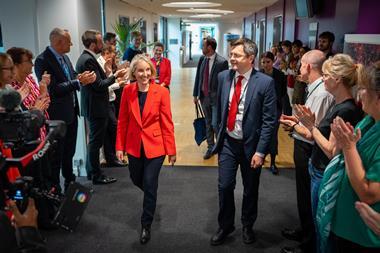
Today, almost four years after it was announced by then Chancellor Philip Hammond, the government’s plastic packaging tax comes into force. In a first-of-its-kind piece of legislation, plastic packaging that fails to meet a 30% threshold for recycled content will be subject to a £200 per tonne levy. It’s something A Plastic Planet has campaigned for since it began.
The Treasury has described it as “a pivotal moment that will drive the fightback against plastic pollution”, “a game-changing tax that will force packaging producers to re-think their relationship with plastic” and a move that will “position the UK as a world leader in rising to the plastic crisis”.
But while it is indeed a step in the right direction, questions loom on whether this tax goes far enough.
Sobering data shows that, if we continue with our business as usual approach, we can expect to mismanage 7.7 billion tonnes of plastic over the next two decades – the equivalent to 16 times the weight of the entire human population on Earth today. Not only is this disastrous for the environment, it’s having a profound effect on human health too. A report revealed last week found that plastic is so ubiquitous that it is now found in the blood of eight in 10 of us. It could not be clearer: we need to meet the plastic crisis head-on with powerful measures to have any real impact.
As it stands, the government’s plastic packaging tax falls short of being the catalyst for achieving this. Uncertainty on who will be responsible for policing and enforcing the tax – and how that vital role will be carried out – remains. Few safeguards have been put in place to prevent the tax from being felt by consumers, as businesses inevitably try to pass on their extra costs. Such a lack of preparation can have a detrimental impact on plastic pollution as it punishes the public for the mess someone else is responsible for making, resulting in no real action being taken.
There are questionable loopholes and exemptions, too. Plastics that have gone through the much maligned chemical recycling process will contribute to the recycled content, irrespective of the process’s vast carbon footprint and staggeringly low yield. As a result, the door is left open for industry to get a quick win in meeting the regulation, regardless of the environmental impact. Meanwhile, plastic applications that are exempt include packaging used to transport goods in aircraft, ship and rail goods stores, as well as packaging that is intended for export within 12 months.
Crucially, and perhaps the most glaring omission, is the lack of guidance for how funds raised from the tax will drive forward plastic-free change. Recycling has failed to solve plastic pollution, so we need to look beyond this and move to better systems where we place an imperative on reduce and reuse. If the government is savvy, it will use the extra tax to build waste stream systems that can process innovative alternative materials and rapidly accelerate the normalisation of refill and the newly coined, convenient, prefill options.
If the tax is to fulfil its promise, it needs to be as robust as possible. The cost of inaction must be meaningful enough that it inspires industry to address all aspects of the plastic crisis, moving beyond the imaginary solution of recycling. We have a one-off opportunity here to create a true world first. But the tax must be enforced in a way that closes off the industry’s escape routes for continued plastic use.
Once we have achieved measurable change in the misuse of plastic for packaging, we should then tackle the fashion industry, currently using fossil fuel plastic for over 60% of our clothes. People buy what they are sold and industry must be highly motivated to sell them something different – something that doesn’t exist for centuries, causing the damage we now witness.
The Treasury has made grandiose claims about this tax. But if these claims are to become a reality there is still plenty of work to do. The current design lays the foundations for a powerful piece of legislation that could hit at the heart of plastic pollution. Now is the time for the government to start building on it.



















No comments yet